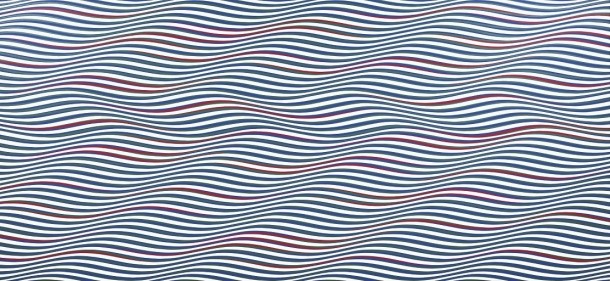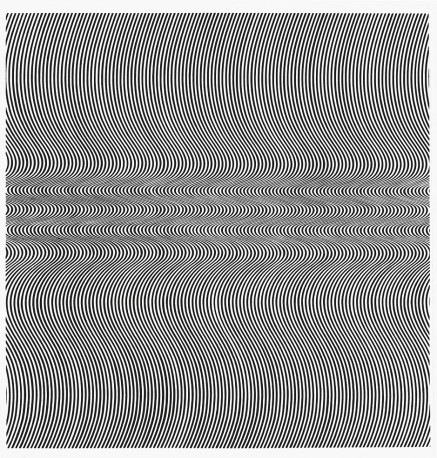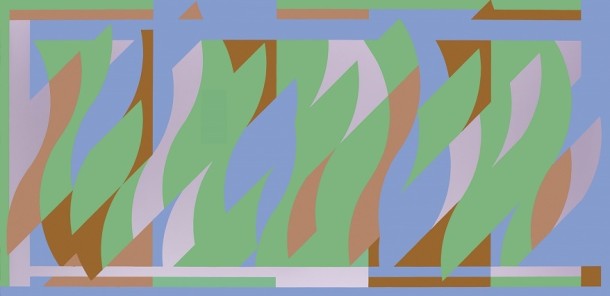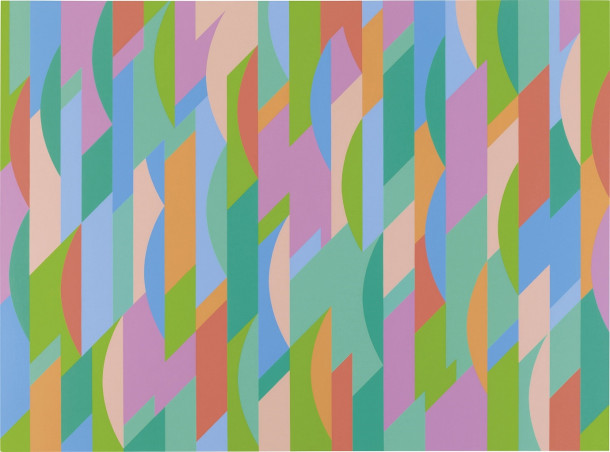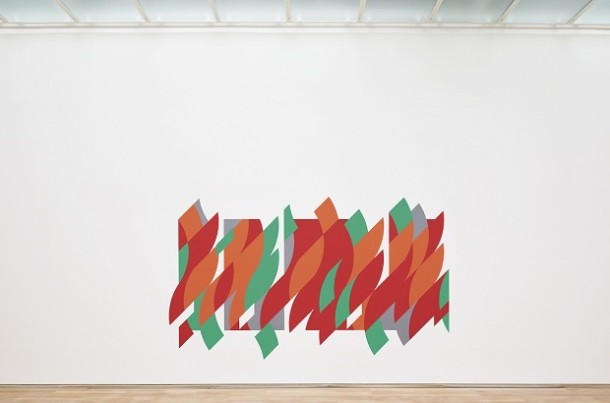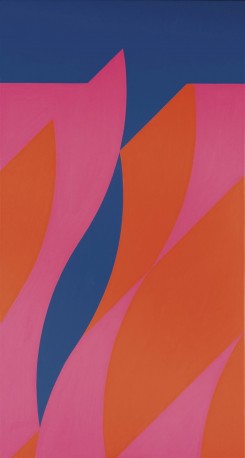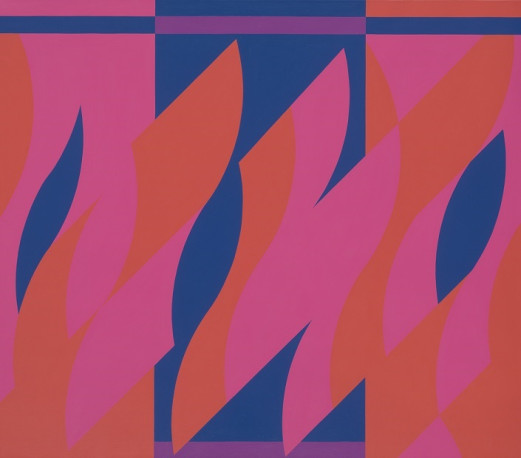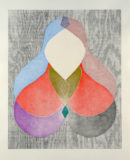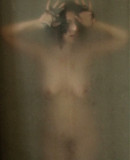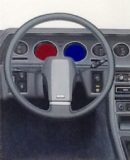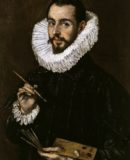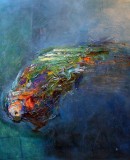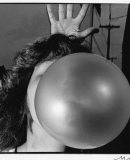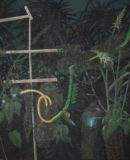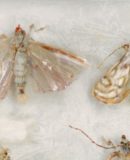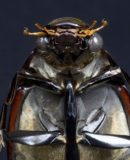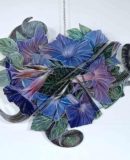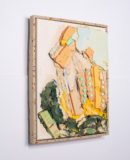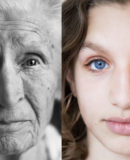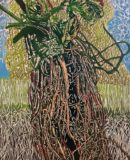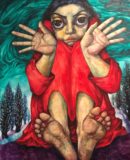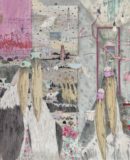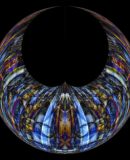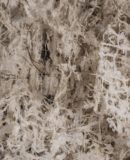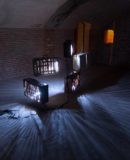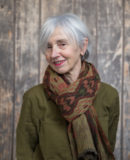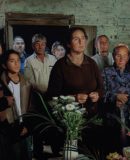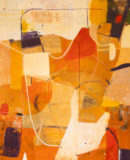World Fine Art Professionals and their Key-Pieces, 88 - Bridget Riley
World Fine Art Professionals and their Key-Pieces, 88 – Bridget Riley
Recently Bridget Riley led us, a group of journalists, around in her exhibition ‘Bridget Riley, The Curve Paintings, 1961-2014’ in the Gemeentemuseum. Bridget Riley is an English painter who is considered one of the most important representatives of the op-art, optical art. She is a grande dame of British painting and received many honors and awards.
“Your looking joins the colors” she told us when we were watching her paintings with wavy lines in three/four colors. “And reinforces it.”We saw waves and depths in the waves. When curator Hans Janssen from the Gemeentemuseum, who has a special relationship with Riley, remarked that it was an optical effect, she said “It goes beyond the optical. It’s visual art.”
Kiss
The exhibition ‘Bridget Riley, The Curve Paintings’ gives an overview of fifty years of a painter’s life. There are more than fifty paintings and studies to see, and the curved line always returns. When did it originate? She told it when we stood in front of the first painting, Kiss. She was desperate at that time, she said. “I was done with it all.” With fierce movements she made a black, square painting. “When I woke up the next day, I looked at that painting and it told me nothing. Then I started thinking. Why didn’t it tell me anything? There is no resistance, no contrast and therefore movement.” She continued to work. It should be different.
She drew a straight line below the middle, and then started to think about a curve. “I hit a nail into the floor of my studio and put the work flat on the floor. I tried some curves until I had one which pleased me. It had to be an uneven curve, one side had to be lower than the other. The black square was divided into two. The top round, but not spherical black almost touched the lower, rectangular black, but not quite, although ….. in the fantasy anything is possible, at least in Bridget’s fantasy, because she gave the work the title Kiss. “The eye is making the painting.”
Human body
It all happened in 1961. It was her first abstract painting and it became the starting point of a whole series of new works, starting with some black and white contrast paintings. Through the impressionists, the color came into it, and there came a series of undulating color paintings. Afterwards she linked it to the human body. The way the human body moves is a vertical line around which moves a curve. It is not surprising that there is also a dance element in it. Riley in an interview with Paul Moorhouse in the catalog: “Actually I see the curves like shapes that produce rousing rhythms, much as dancers do. Dancing is in my mind.”
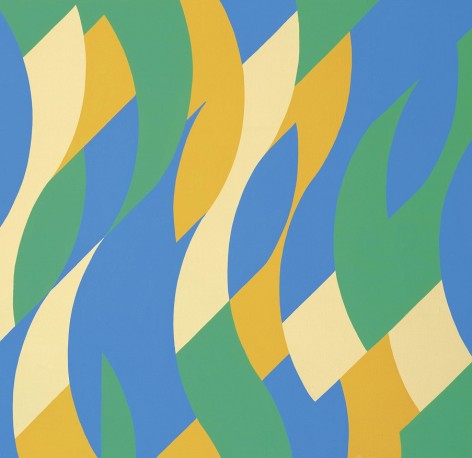
A considerable period of time, however, almost 17 years, from 1980 to 1997, she left the curves. She started to paint stripe-lines. But then they come back, the wavy lines, in Lagoon 2 in 1997. “I was very happy, because I had missed them that long!” She had many colors added to the original small group of colors, she mixed vertical, horizontal and diagonal lines and curves.
In the same interview: “I tried so many things, but could not find my way. Eventually I tried to cross things over each other and I enlarged the the work. So there arose a few surfaces and a larger group diagonals. I fell in a flow, and the flow didn’t stop!”
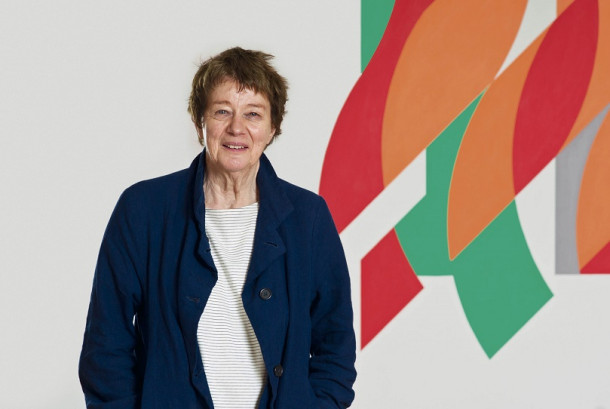
Museum für Gegenwartskunst Ausstellung Bridget Riley12. Rubenspreis der Stadt SiegenAusstellung von Bridget Riley vom 01.07.-11.11
Rajasthan
Also French painters, such as Cézanne and Matisse assert their influence, which can be seen in the work of 1999, Rêve (dream). As we face the green-blue, dark yellow end light yellow work, she says: “David Sylvester, an English critic, came to watch. ‘It’s Matisse’ he said, and immediately afterwards “It’s not Matisse, but it could not be made without Matisse.’ Because of this response, I felt really encouraged.”
She got so much confidence that she dared to exchange the canvas by a complete wall on which she painted Rajasthan (2012). It is now repainted by her helpers at the wall of the Gemeentemuseum.
Riley: “There are reds, greens, oranges and greys. The movement sweeps across. The white wall plays an active part. I like especially the greys and the greens. They keep the work together.”
Images: 1) Kiss, 2) Streak 2, 3) Current, 4) Blue la reserve, 5) Lagoon 2, 6) Rêve, 7) Rajasthan, 8) portrait Bridget Riley with Rajasthan, 9) Trail, 10) Two Reds with Violet
http://www.gemeentemuseum.nl/tentoonstellingen/bridget-riley
Disclaimer: The views, opinions and positions expressed within this guest article are those of the author Walter van Teeffelen alone and do not represent those of the Marbella Marbella website. The accuracy, completeness and validity of any statements made within this article are not guaranteed. We accept no liability for any errors, omissions or representations. The copyright of this content belongs to Walter van Teeffelen and any liability with regards to infringement of intellectual property rights remains with the author.


